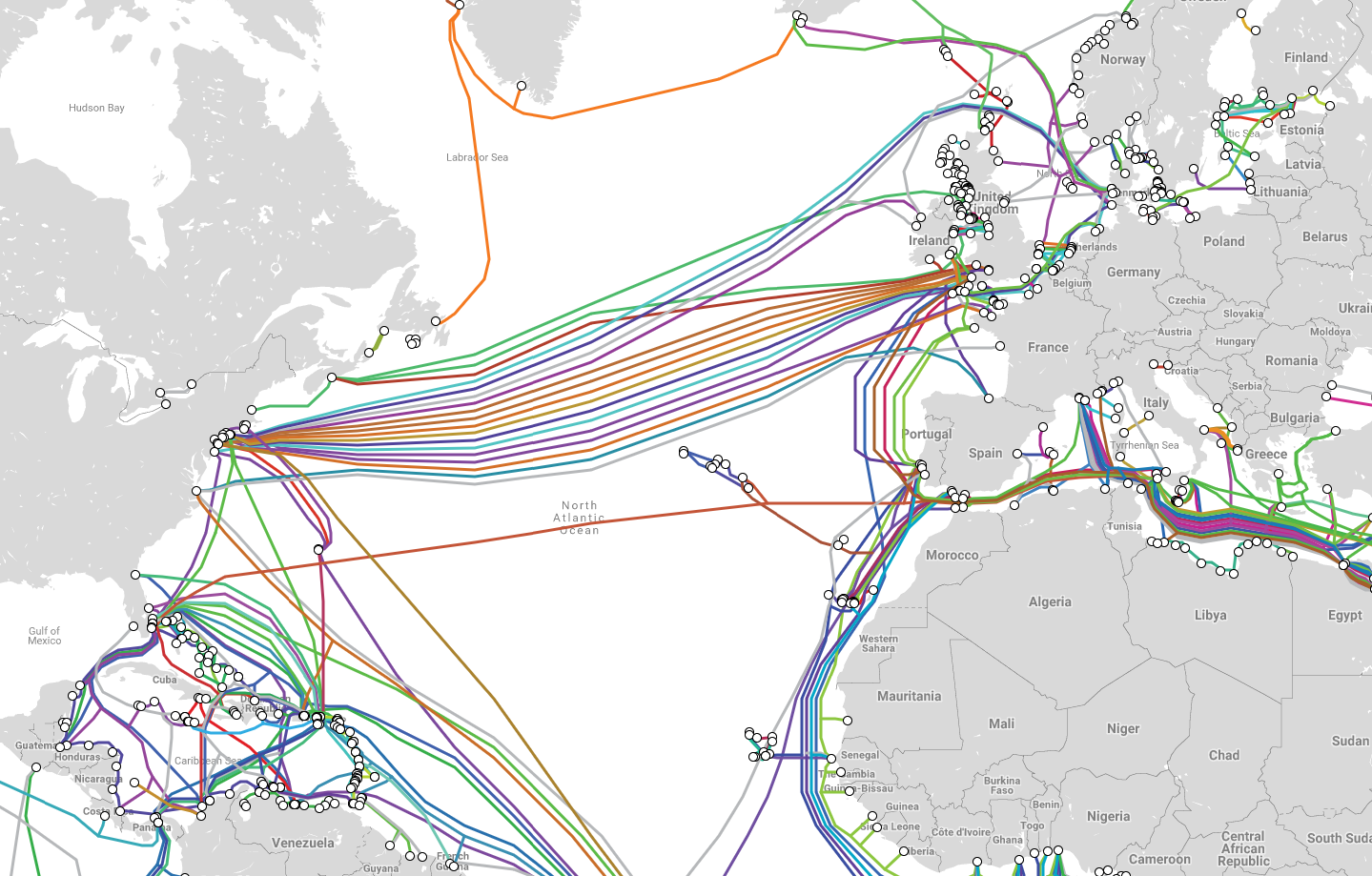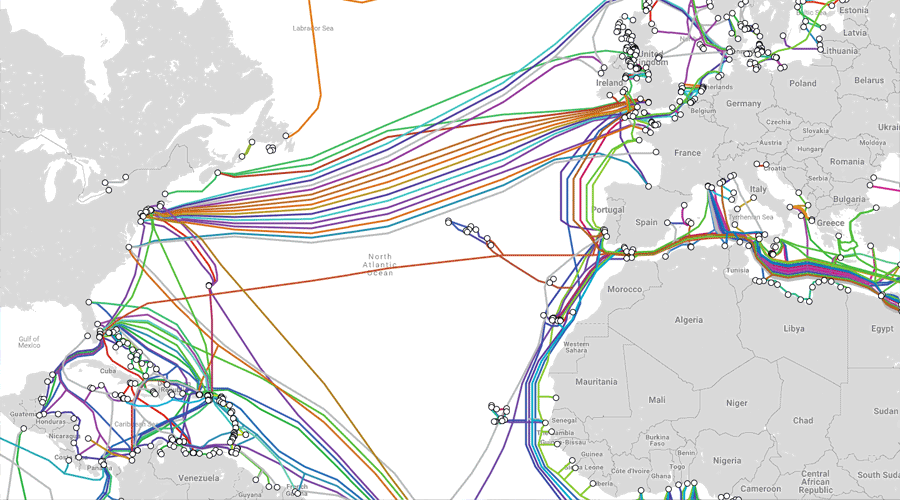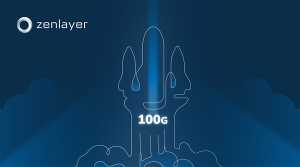
Zenlayer employees aren’t born telecoms experts – they have to learn. Our newest member of the Marketing team, Marie, has been doing just that. Her enthusiasm has been so infectious we asked her to write about some of the topics she’s found particularly interesting. If you’re an old hand in the industry, we hope you’ll enjoy “looking through new eyes” at some things we now take for granted.
Something most people take for granted about the internet is
the ability to reach absolutely anywhere. But when you think about it,
when I email a friend in the UK and then join a group presentation in China,
that data has to be travelling along something. Ask a random person on
the street, and you’ll hear an answer like “satellites” or “radio” or “isn’t
that 4G?” In this age of wi-fi, fewer people will think to remember the cables.
Tasked in my first week with familiarizing myself with the company, one of the things I did was read the April/May edition of Capacity from cover to cover. Seemed like a good way to learn the vocabulary, right? I was surprised to find an entire section devoted to new cables, including many that went under the ocean. Oh yeah! Cables would have to go underwater to go between continents, wouldn’t they? I remember hearing about one getting cut a few years back and blacking out Europe or something like that. Turns out those cables I forgot about handle 99% of all international data.1https://www.nec.com/en/global/about/mitatv/01/index.html
But geez, those cables are expensive. A new branch cable to Algeria (just a branch cable, mind) cost $32 million.2https://www.capacitymedia.com/articles/3823173/algeria-goes-live-with-32m-medex-branch-cable That’s for just 184 km of cable (114 miles for us Americans). And there are nearly 4003https://www.submarinecablemap.com/#/ of these cables lurking under the water. But while they’re long (crossing the Atlantic Ocean is no mean feat; at least in the Pacific you get to stop at Hawaii), they’re not very wide. Most are around the same diameter as a soda can.
Cables even have an interesting history we’re watching
repeat right now. Back in the late ‘90s, the internet had just caught on and
telecoms were certain they would need an enormous amount of capacity. Then,
whoops! The dot-com bubble burst and most of those cables didn’t get used
anywhere close to their top capacity. Now we’re suddenly seeing a major
interest in cable laying again, possibly to again greatly exceed capacity.
Side note: At least, that’s the story I kept4https://www.bloomberg.com/news/articles/2019-03-14/undersea-cables-are-no-longer-underwater-as-fiber-booms-again seeing5https://www.wired.com/story/google-cramming-more-data-new-atlantic-cable/ in articles written this year, but just because the bubble burst on the market I don’t remember data being any less popular at the time. Businesses were just making less money than they’d thought they would. Plus, wouldn’t you want to allow for a lot of extra capacity so you don’t have to lay more cables for a while? And then there’s the fact that telecoms in the United States were taking government money to make upgrades that never materialized…6https://www.huffpost.com/entry/the-book-of-broken-promis_b_5839394 But hey, I’m new to this industry. ¯_(ツ)_/¯
But right, back to ocean cables. Did you know they use light to transmit data now?! Okay, you probably did. You’re on a blog for a cloud networking company. Bear with me. But did you know they don’t just use light, they use a whole bunch of different frequencies, and they don’t even turn the light off and on to transmit data like they used to, they just modulate the frequency? That’s sci-fi stuff! Doing it this way Infinera set a record7https://www.popsci.com/submarine-cable-data-transfer-record/ for the most amount of data sent in a second: 26.2 terabits. That’s insane. But it’s a concept so easy I can explain it to my five-year-old niece: “Your data gets assigned a special color. There are so many colors in the world, everyone can have a special color, just for them.8
Unfortunately, my niece is old enough to learn about dark fiber but too young for Oprah “You get a car!” references. And all of these colors can fit inside one cable, just like how rainbows can be very big or very, very small.”
Then you get to tell your niece about the boats that lay out
these cables, and you tie some yarn to a toy in the bathtub to demonstrate and
her dad is reconsidering letting you babysit… My niece gets to hear a lot about
my job, is what I’m trying to say.
If you go further down the rabbit hole (…sea hare cave?), it gets both more interesting and more difficult to explain. Light famously has a fixed speed, so how do you make it go faster? You can’t, but you can add more fibers and transmit more light at once. The problem with that is, you need more repeaters, and then you start to run out of space in the cable, but inventors are finding ways around that too. Google and SubCom are using “space-division multiplexing”9https://www.lightwaveonline.com/optical-tech/transmission/article/16667943/google-subcom-to-deploy-spacedivision-multiplexing-on-dunant-submarine-cable for their new transatlantic cable, which is a concept still a little beyond me. I was always better at kinematic physics than electromagnetism, let alone the wizardry involved in this.
Anyway, that’s what I’m really excited about this week. I hope you’ve enjoyed (re-)learning about a key piece of telecom infrastructure. Now I’m off to take my niece to the beach.







